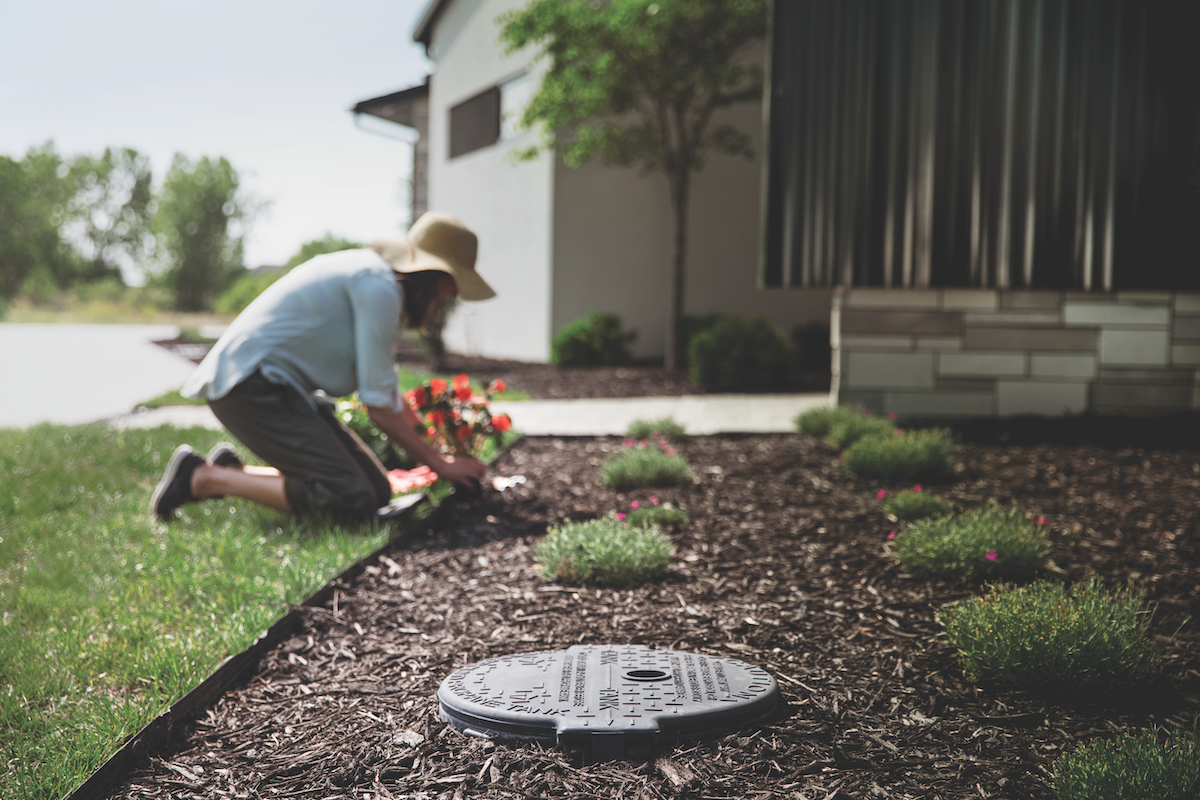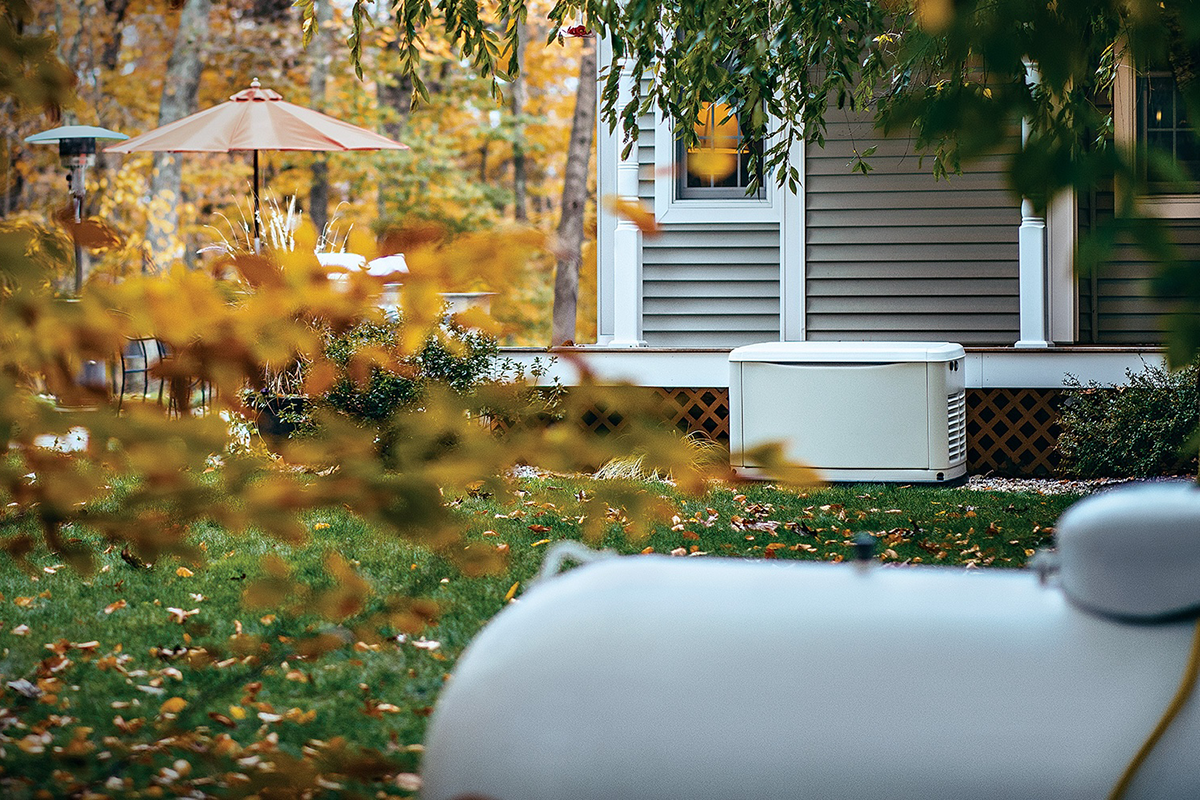

We may earn revenue from the products available on this page and participate in affiliate programs. Learn More ›

Partner Story
A home powered by propane can provide lower utility bills and greater peace of mind, no matter where you live.
As a homeowner, you have several choices for how to power your home. It’s vital to prioritize an energy source that is proven to be safe, clean, and reliable, especially during unexpected events like power outages or extreme weather. For these reasons, more than 11 million households across the United States choose propane to power their homes.
Propane, also called liquefied petroleum gas or LPG, is a gas normally compressed and stored as a liquid. It is nontoxic, colorless, and odorless, but it contains an identifying odorant that smells like rotten eggs or skunk spray called ethyl mercaptan to help detect leaks. Propane is a common energy choice for water heating, heating appliances like furnaces and fireplaces, kitchen ranges, clothes drying, outdoor appliances like grills and fire pits, and backup generators.
Those looking to be less dependent on the electric grid will find that propane is a smart choice. Here you’ll learn more about why propane is a highly efficient, reliable energy source for homes; how propane generators can provide a safe backup plan during an emergency; and ways in which propane can work in tandem with other energy sources and technologies.

Propane is a clean and efficient energy source for homes.
Given rising energy prices and concerns about climate change, choosing a clean and efficient energy source is more important than ever. Using highly-efficient propane appliances can save homeowners hundreds annually on energy costs while also minimizing their environmental impact. Propane is a low-carbon energy source that reduces emissions and won’t pollute soil or groundwater, making it an environmentally friendly option for eco-conscious homeowners, says Bridget Kidd, chief operating officer at the Propane Education & Research Council (PERC).
Comparing the carbon intensity (gCO2eg/Mj) of various energy types reveals significant differences. “The average carbon intensity of the electric grid in the United States is 130 gCO2eg/Mj, while propane’s is 79 gCO2eg/Mj,” notes Kidd. Carbon intensity represents carbon dioxide equivalent per megajoule of energy. “This means if we used the same amount of energy, the carbon footprint of electricity would be greater than that of propane. In fact, on average, residential propane furnaces produce 50 percent fewer greenhouse gas emissions than electric models,” adds Kidd.
Propane boosts emergency preparedness and resilience.
Unlike electricity or natural gas, which a utility transmits or pipes to your house from a central location, propane is stored on-site in a tank that homeowners can have buried or installed above-ground. As a result, propane is available as a reliable energy source almost anytime, anywhere, even in the most remote locations that aren’t serviced by public utilities.
“The quality of propane doesn’t degrade over time like some other fuels do, so it’s always ready to provide power when it’s needed,” explains Kidd. This is critical during severe weather events like a major storm that can knock out electricity. With propane, there’s no need to depend on power or transmission lines to guarantee safe and reliable energy for all your home’s essential systems.
Propane-powered backup generators also offer resilient power and peace of mind, keeping essential systems like lighting, HVAC, cooking, and refrigeration running, so you can stay safe and comfortable during an emergency or weather event. Unlike portable gasoline generators, which rely on frequent fuel refills, a propane standby generator connects directly to the on-site tank, ensuring days or even weeks of power during an outage.
These standby generators start running within 10 seconds to return power to a home and all its essential systems. Many have on-board Wi-Fi-enabled systems that communicate with the manufacturer or service company to proactively service the unit and keep it running properly. “By having a propane generator, homeowners are ensuring that their families are safe, while avoiding costly losses like spoiled food and hotel stays,” says Kidd.

Propane can work in tandem with other energy systems.
Propane is a great complement to other energy solutions like solar panels, wind turbines, EV chargers, and fuel cells. “Solar or wind power can be converted to electricity, but they are defined as intermittent, meaning they can’t provide guaranteed energy,” notes Kidd. “Propane is a dependable partner, since it is stored on-site and waiting to be used.”
Another example of propane partnering with other energy sources is hybrid or dual-fuel heat pumps, which deliver heat to a home until the temperature starts to drop. “When the heat pump can’t keep up, a propane furnace or propane-powered hydronic heat pump solution can do the heavy lifting,” Kidd explains. “And when the electric grid fails, something has to power the battery for backups or EV charging; a propane generator can reliably produce the electricity needed to do that.”
Propane and solar also work well together. High-efficiency propane appliances can partner with solar and other energy systems to deliver reliable, affordable comfort and help homeowners control costs. Propane powers energy-intensive applications like water heating, space heating, cooking, and clothes drying, while the solar panels handle lighter loads like LED lights and fans. “It’s all about using the right energy source for the right job,” says Kidd.
Smart technology enhances the efficiency of propane-powered units.
Smart technology integrates seamlessly into propane systems for a more efficient, connected home. And propane retailers can utilize tank monitors that indicate when propane levels are low and a customer’s tank needs to be refilled.
For example, some propane tankless water heaters learn the user’s habits so circulation pumps function only during times of known demand. Additionally, smart thermostats can determine when to use a heat pump or propane heat based on outdoor air temperature and the system’s ability to heat the home. In the future, these units will run during the opportune times to save money. “If we know that there is a peak electrical rate that makes the heat pump more expensive than the propane furnace regardless of outdoor temperatures, then the smart thermostat can turn the propane furnace on,” explains Kidd. “The next big advancement will be to make these decisions based on which system produces the lowest emissions.”

Innovation continues to make propane a smart choice.
The propane industry is constantly innovating to make propane an even cleaner and more efficient energy source. Homeowners looking to cut electricity usage and costs will find available new propane technologies that produce heat and electrical power, called micro-combined heat and power systems, or micro-CHP. “These systems work in concert with the electric grid to limit peak demand, reduce stress on the grid, and reduce total costs for the homeowner,” Kidd shares. “And fundamentally, every propane appliance used in a home helps reduce reliance on the electric grid, giving homeowners more energy independence and choice.”
In addition, efforts are underway to increase production of renewable propane. Made from sustainable sources like plant and vegetable oils, animal fats, and used cooking oil, renewable propane has significantly lower carbon emissions. “This allows us to use today’s appliances better,” says Kidd. “Innovations like gas heat pump technologies and hybrid heat pump systems that primarily use electricity and switch to propane to meet peak demands or increase comfort in freezing temperatures will leverage renewable propane in the future for an even cleaner and more efficient energy solution.”